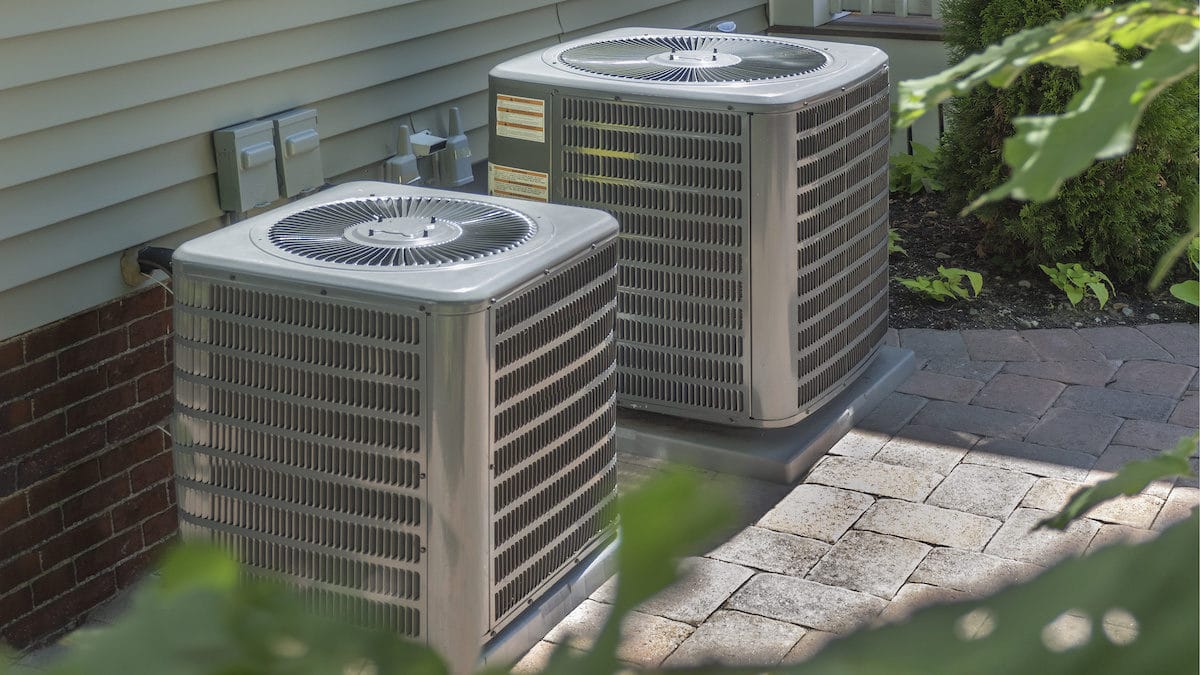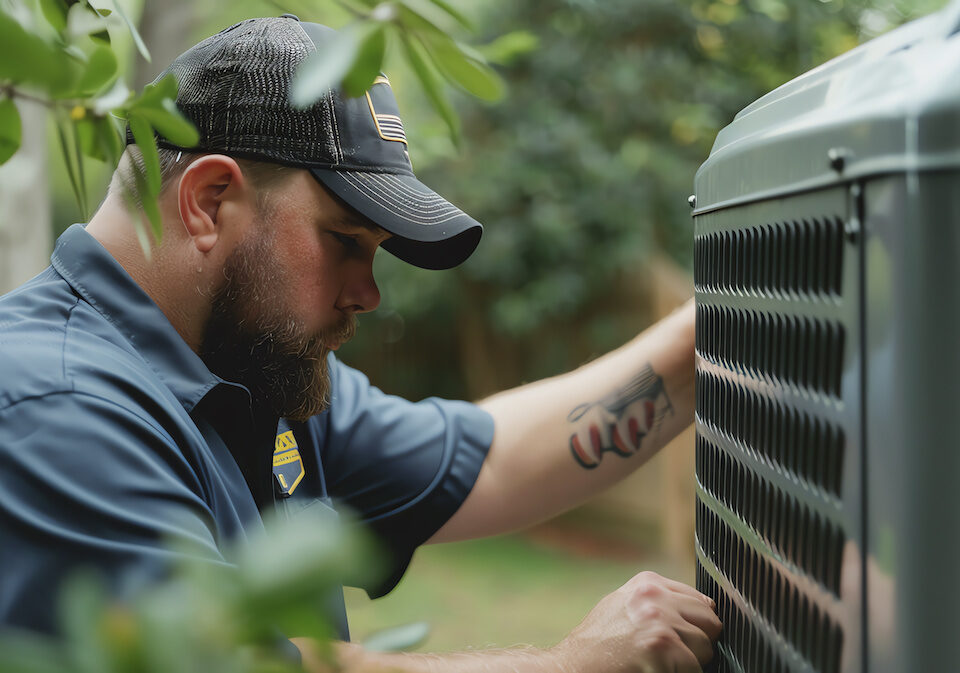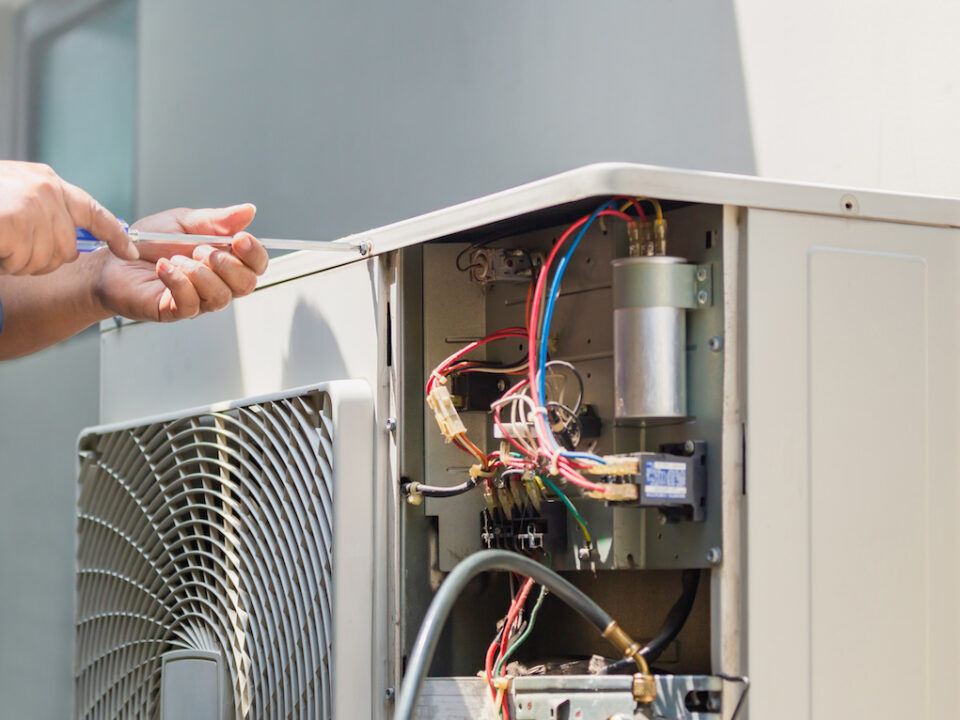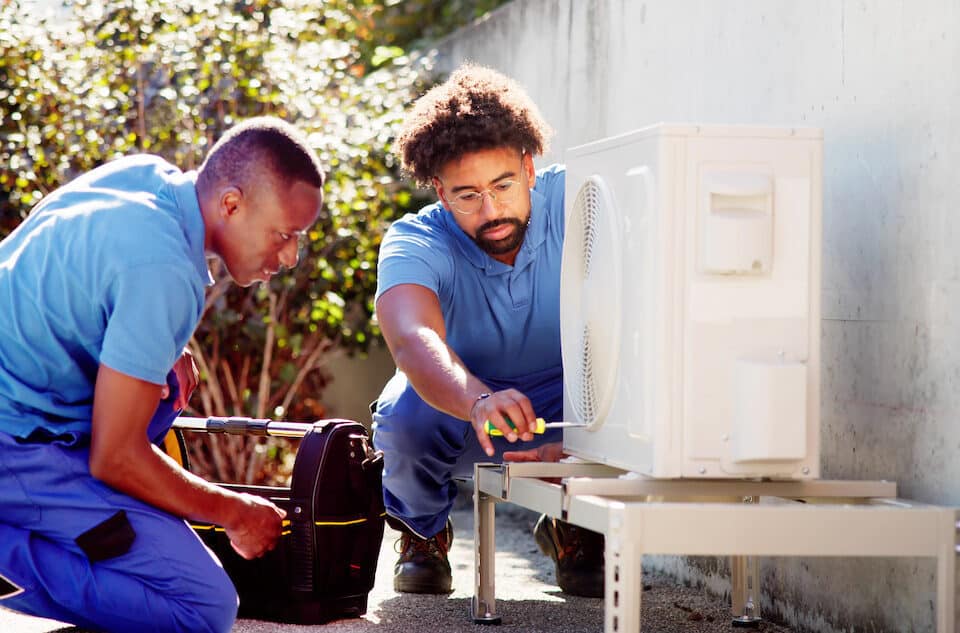Why Should You Clean Your HVAC Drain Line?

A common reason for a HVAC to stop working is a clogged drain line. When the drain line backs up, it triggers a sensor that turns off the HVAC system until the line is cleared. The purpose the drain line is to remove condensation that develops with the unit’s evaporator coils. This drain line carries moisture down and out of the house which you can see on the outside of your home. It is the narrow, small pipe that usually has a slow drip of water trickling from it when the AC unit is on or has recently been on. This line can get clogged from time to time.
Why Clean Your Drain Line?
Cleaning your drain line regularly can help your equipment run more efficiently and prevent any problems with your HVAC system.
What Causes AC Drain to Clog?
Air conditioner drain lines become clogged when buildup of dirt or algae collect at the indoor coil. When the drain line is clogged, the water has to go somewhere so what you will see is a back-up of water in the drain pan which may result in serious water damage to your home.
Options
You have two options to clean your drain line:
- DIY
- Hire a professional HVAC Company. Let them fix the problem correctly.
Routine AC Cleaning Without Blockage
1. Turn HVAC system off.
2. Locate cleaning port. If the unit has turned off due to a blockage, you may need a bucket to collect the condensation resting in the drain pan.
3. Remove cleaning port cap.
4. Slowly pour cleaning solution down PVC drain line. Repeat three times.
5. Replace cleaning port cap.
6. Turn system back on.
Here are two methods to clean out your air conditioning drain line. If the clog is severe, start with the second method listed below.
Method 1 –Small Blockages
1. Turn HVAC system off.
2. Locate cleaning port. If the unit has turned off due to a blockage, you may need a bucket to collect the condensation resting in the drain pan.
3. Remove cleaning port cap.
4. Assess clog. If you can see the blockage, attempt to remove the blockage. Do not push it further away. Instead, attempt to lift the blockage out of the drain pipe. If the blockage breaks, separates and falls down the pipe do not be alarmed. It can be rinsed out with water.
5. Slowly pour cleaning solution down PVC drain line. If cleaning solution fills drain line, do not continue to pour solution. Follow steps in Method 2.
6. After pouring is complete, assess the blockage. If the cleaning solution does not flow out of the drain line, the blockage is still intact. This may be a sign that there is a larger block in the drain line. Follow steps in Method 2. If the pipe fills and slowly drains then repeat step 5 until cleaning solution passes without difficulty.
7. Replace cleaning port cap.
8. Turn system back on.
Method 2 – Larger Clogs
1. For larger blockages, use a wet-vac or air compressor to remove the blockage. If using a wet-vac, suction can be applied to either end of the drain line to remove the clog.
2. If the cleaning solution or water fills up the drain, a wet-vac can be used to remove the fluid. Repeat pouring of cleaning solution down PVC drain line, if necessary.
3. Once the line has been cleared, test with cleaning solution or water.
4. Replace cleaning port cap.
5. Turn system back on.
If you are having any problems or want to have regular maintenance, contact a quality HVAC professional?
Contact Us
Contact the pros at TRUST Heating & Air to discuss savings tips and free estimates.



